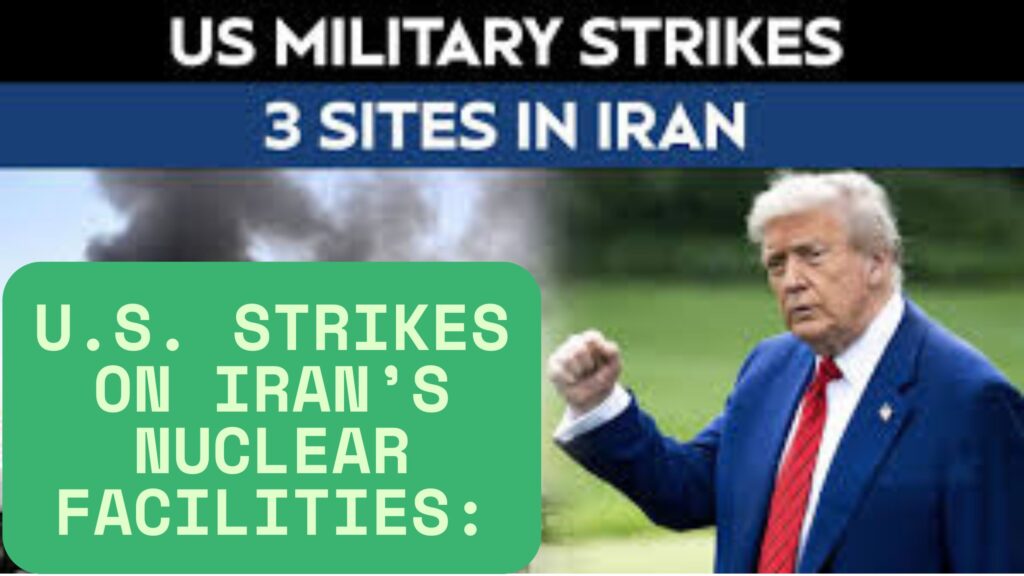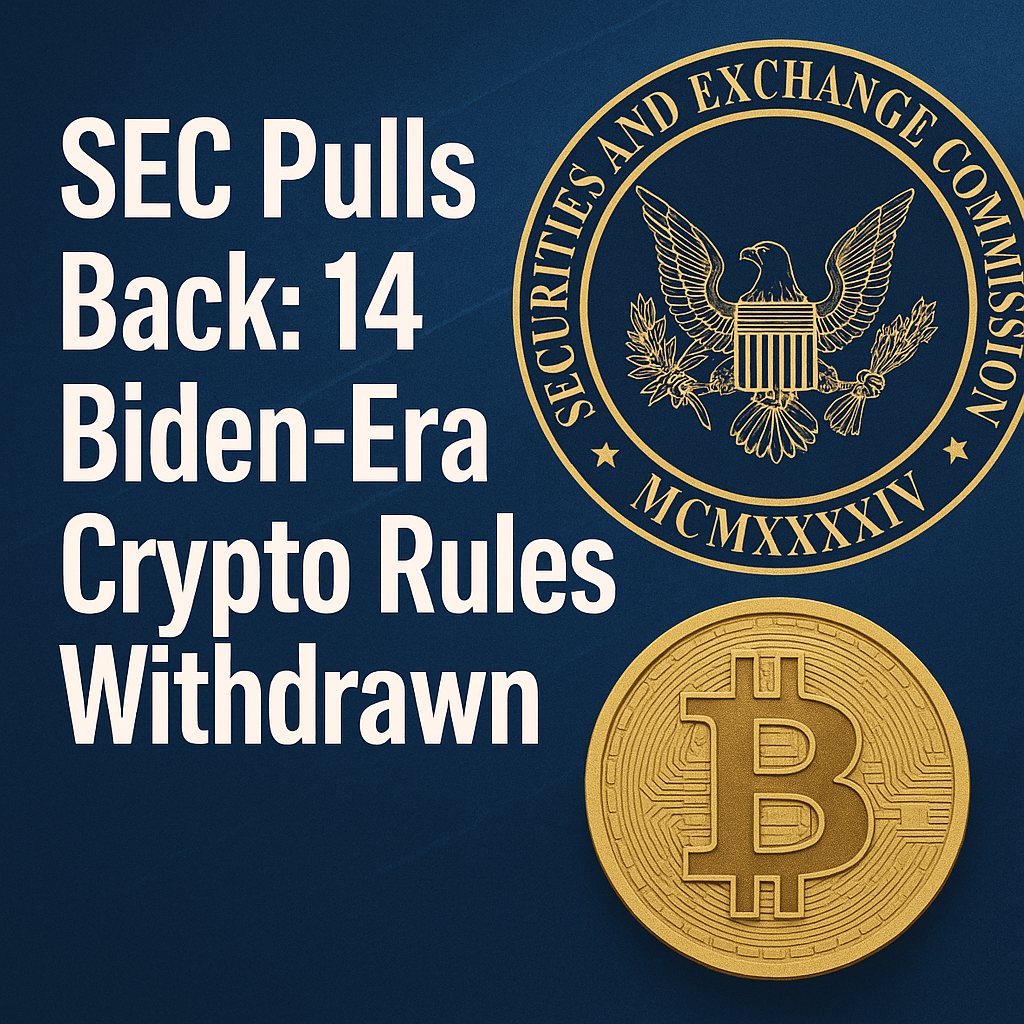The world held its breath as tensions between the United States and Iran escalated once again—this time with precision airstrikes targeting key nuclear facilities deep within Iranian territory. The bold move, which some analysts see as a deterrent and others as provocation, has shaken global markets, raised fears of broader conflict, and left citizens worldwide wondering: What’s next for the Middle East and the world?
In this in-depth article, we break down what we know so far about the U.S. strikes on Iran’s nuclear infrastructure, why they were carried out, the international reactions, and what this means for global stability, energy security, and diplomatic relations going forward.

🔍 What We Know About the U.S. Strikes
🎯 When and Where Did the Strikes Occur?
In the early hours of June 19, 2025, U.S. military aircraft launched a coordinated airstrike campaign targeting several key nuclear facilities in Iran, including:
- Natanz Nuclear Facility: Known for its underground uranium enrichment halls.
- Fordow Fuel Enrichment Plant: One of Iran’s most fortified nuclear facilities buried deep beneath a mountain.
- Isfahan Nuclear Technology Center: A hub for nuclear research and uranium conversion.
The strikes were reportedly carried out using stealth bombers, long-range cruise missiles, and precision-guided munitions to minimize collateral damage. U.S. military sources claim the mission was successful and that no American personnel were injured.
- 16 Billion Passwords Exposed in Colossal Data Breachin Colossal Data Breach:
- Kroger Closing 60 Stores in 2025:
- Social Security Payments in the USA 2025:
🇺🇸 Why Did the United States Launch the Strikes?
💣 Accelerating Nuclear Threat
According to U.S. intelligence and international nuclear watchdogs, Iran had significantly increased uranium enrichment beyond the 90% purity level—enough for weapons-grade material. Iran also had allegedly barred International Atomic Energy Agency (IAEA) inspectors from certain sites, raising fears that it was rapidly approaching the nuclear breakout point.
🧠 National Security and Regional Stability
The Biden administration (in its second term) stated that the strikes were a “last-resort defensive measure” aimed at delaying Iran’s nuclear weapons program, not initiating war. Washington insisted that the decision followed months of failed diplomatic negotiations and escalating threats against Israel and other U.S. allies in the region.
🌍 How Did Iran Respond?
🚀 Retaliation Threats and Missile Alerts
In the hours following the attack, Iranian leadership vowed “swift and severe retaliation.” Tehran’s Revolutionary Guard launched several medium-range missiles at U.S. bases in Iraq and the Gulf region. While most were intercepted, a few caused structural damage but no casualties.
Iranian Supreme Leader Ayatollah Khamenei declared a “holy defensive war” and said the nuclear program would be accelerated “with vengeance.”
🛑 Nuclear Deal Dead
Any hopes of reviving the 2015 Joint Comprehensive Plan of Action (JCPOA) appear to be officially dead. Iran withdrew from all prior obligations, expelled IAEA inspectors, and announced plans to develop its “peaceful deterrence capability”—a thinly veiled reference to nuclear weapons development.
🌐 Global Reactions
🇮🇱 Israel Backs the Move
Israel praised the U.S. strikes as a “brave and necessary act” to prevent Iran from obtaining nuclear weapons. Israeli intelligence reportedly provided key support in identifying strike targets.
🇷🇺🇨🇳 Russia and China Condemn the Attack
Russia called the airstrikes a “blatant violation of international law,” while China urged both sides to “exercise restraint.” Both nations are expected to use their influence in the UN Security Council to censure the United States.
🇪🇺 European Union Appeals for Peace
European leaders, including those from France and Germany, expressed concern over escalating tensions and called for an emergency diplomatic summit to avoid a full-scale regional war.
🛢️ Impact on Oil Prices and Markets
📈 Energy Prices Spike
Global oil prices surged past $120 per barrel following the strikes, as fears of supply disruptions from the Strait of Hormuz—a key oil transit chokepoint—intensified. Iran threatened to block the strait, a move that could send global oil markets into chaos.
💹 Market Volatility and Investor Fears
- Gold and crypto assets surged as investors sought safe havens.
- Defense stocks like Lockheed Martin and Raytheon spiked.
- The S&P 500 saw a sharp decline due to geopolitical uncertainty.
🧭 What This Means for U.S. Foreign Policy
⚖️ Striking a Balance Between Diplomacy and Force
Critics argue the Biden administration abandoned diplomacy too soon. However, officials claim the nuclear threat reached an irreversible point and that the strikes were carefully calibrated to avoid triggering full-scale war.
🛡️ Reasserting U.S. Influence
The strikes also send a strong message to adversaries like North Korea and Russia: the U.S. is willing to take direct action when nuclear threats cross red lines.
⚠️ Risks and Future Scenarios
🔄 Possible Escalation Paths
- Regional War: Proxy conflicts in Lebanon, Syria, and Iraq may erupt.
- Cyber Attacks: Iran may retaliate with cyber warfare targeting U.S. infrastructure.
- Terrorism: Hezbollah or other allied groups may target Western assets globally.
✍️ Diplomacy Still a Possibility
Despite the flames of conflict, some believe diplomacy isn’t dead. Qatar, Oman, and Turkey are reportedly working behind the scenes to de-escalate tensions.
📅 Timeline of Key Events
| Date | Event |
|---|---|
| May 2025 | Iran expels IAEA inspectors |
| June 10, 2025 | Satellite images show suspicious nuclear activity |
| June 19, 2025 | U.S. launches airstrikes on Iranian facilities |
| June 20, 2025 | Iran fires missiles at U.S. bases in Iraq |
| June 21, 2025 | Oil surges to $123/barrel |
📢 Voices from the Ground
👤 Iranian Citizens Speak Out
Many Iranians took to social media criticizing both their government and the U.S. military action. A viral tweet read:
“We are tired of being pawns in a geopolitical chess game. We want peace and electricity, not nuclear bombs.”
👤 American Public Opinion
Polls conducted by Reuters/Ipsos show Americans are split:
- 47% support the strikes as necessary
- 39% oppose military involvement in the Middle East
- 14% undecided
✅ Conclusion: A Turning Point in Middle East Politics?
The U.S. strikes on Iran’s nuclear facilities represent a seismic shift in the geopolitical landscape. Whether this act is seen as strategic containment or the opening shot of a broader war depends on what happens in the coming days and weeks.
One thing is clear: the nuclear clock is ticking, and the world is watching.
📚 Frequently Asked Questions (FAQs)
❓ Why did the U.S. target Iran’s nuclear facilities now?
Because intelligence indicated Iran was dangerously close to developing a nuclear weapon and diplomatic efforts had failed.
❓ Did the U.S. coordinate with allies?
Yes, reports suggest coordination with Israel and quiet support from Gulf allies.
❓ What’s the risk of a wider war?
High. If Iran retaliates against U.S. allies or blocks oil transit routes, conflict could spill across the Middle East.
❓ Is diplomacy completely off the table?
No. Qatar and Turkey are exploring backchannel communications to avoid further escalation.
❓ Will oil prices remain high?
Likely yes, at least in the short term, as markets adjust to the risk premium caused by instability in the Gulf.

